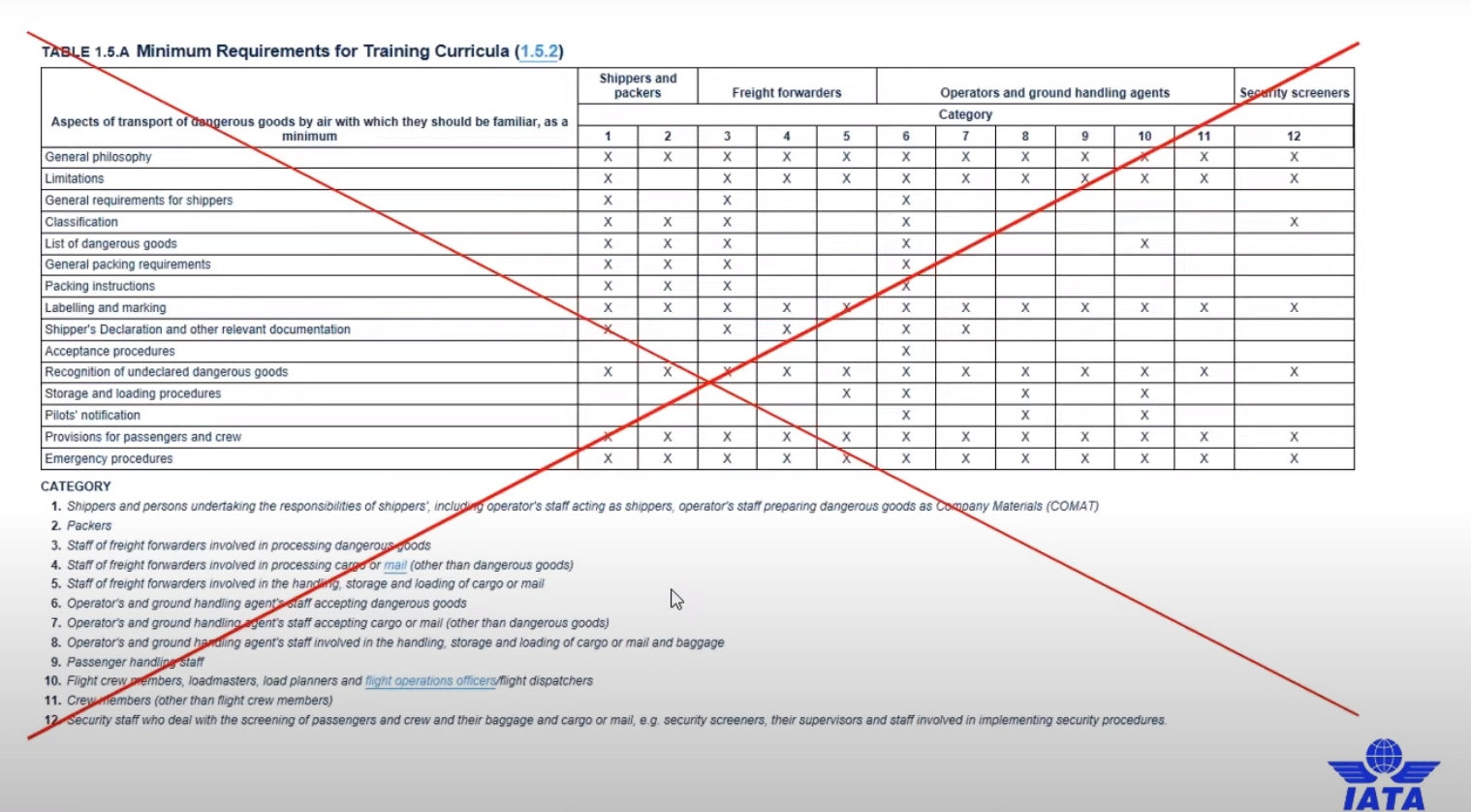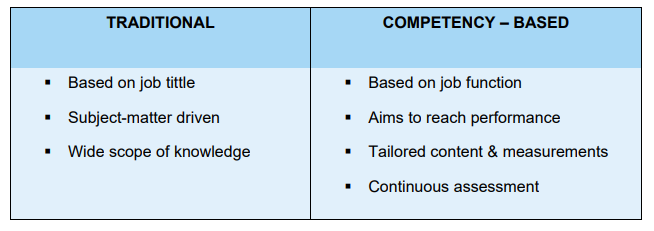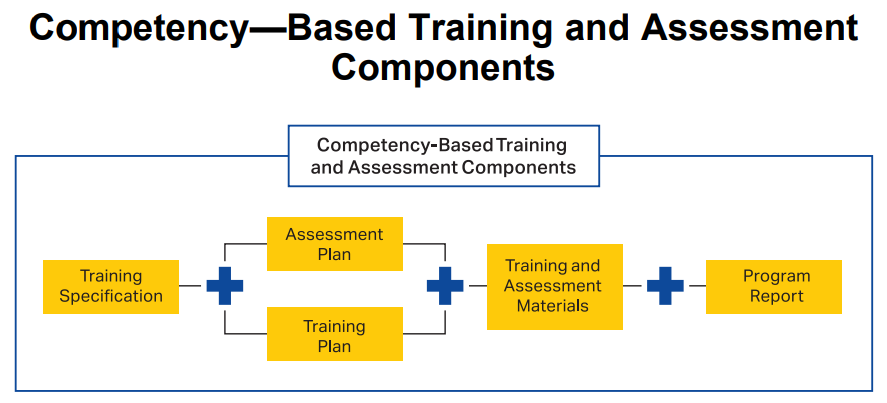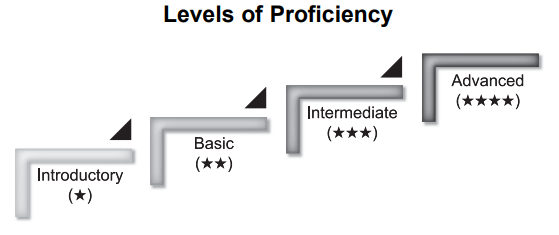
Dangerous goods are articles or substances which are capable of posing a hazard to health, safety, property or the environment. Therefore, it is of critical importance that the individuals across the entire supply chain who prepare, offer, accept and handle these goods are properly trained to do so.
As a result, for the staff involved in the air transport of dangerous goods, IATA has made it mandatory to receive training and be qualified every two years. The provisions on dangerous goods training have been in place for many years, and the most up-to-date information can be found in the IATA Dangerous Goods Regulations (DGR). According to ICAO Annex 6 – Operation of Aircraft, dangerous goods training programs for operators’ must be approved by the appropriate authority of the State of the operator, and some States extend this requirement to other entities, such as training service providers, shippers and freight forwarders.
In September 2019, the ICAO Dangerous Goods Panel (DGP) undertook the development of new proposed provisions and guidance material under a competency-based approach for dangerous goods training. The objective of competency-based training and assessment (CBTA) is to use the necessary tools to clearly establish the training needs for a specific job function and then ensure that employees acquire the level of knowledge and demonstrate the right skills to perform that function.
The adopted revised provisions for dangerous goods training to incorporate a competency-based training and assessment (CBTA) approach will become mandatory for dangerous goods training as of January 1, 2023.
The successful application of rules concerning the transport of dangerous goods greatly depends on the appreciation by all professionals of the risks involved. Training is key to achieve a detailed understanding of the Regulations. Here are three reasons why:
IATA makes obtaining dangerous goods training easy and accessible to everyone who needs it by offering courses and yearly manuals so that stakeholders can stay up-to-date on the most current rules and regulations. IATA’s desire to keep aviation safe is the driving force behind ensuring the regulations are met by adequately training all parties involved in the transport of dangerous goods . Whether you are a shipper, freight forwarder, cargo acceptance agent, cabin crew member or any role in-between, you can find up-to-date information on training for dangerous goods on IATA’s website.
While the framework of the training requirements in the ICAO Technical Instructions and IATA DGR has changed from category-based to competency-based, the principle of creating a competent workforce to perform their assigned function(s) has not. The revisions emphasize more on the importance of a person to be trained and assessed, and be able to demonstrate their competence.
While most of the changes should not have any significant effects on training programs, the following may be considered noteworthy:
Tables 1.5.A and 1.5.B that can still be found in Appendix H.A of the IATA Dangerous Goods Regulations (DGR) match various categories of dangerous goods personnel with specific subject matter for which they should be familiar. While these tables are intended as guidance, they are often considered as mandatory requirements which contradicts the overarching principle of “commensurate with responsibilities” required of dangerous goods training curricula. This has led to the unintended consequence of training curricula being developed based on employee titles or positions instead of the functions they perform, resulting in some employees being trained on subject matter unrelated to the functions they perform while not being adequately trained on subject matter that is related to the functions they are assigned to. This approach is in complete contrast to the principles of competency-based training and assessment. By removing the tables, the need for employers to determine the type and level of knowledge, skills and attribute necessary to perform specific functions is reinforced and supports the requirement for employees to be trained competently to perform their function(s).

The Technical Instructions currently require the provision of assessments following training to verify understanding. While this conventional approach is useful in determining the degree to which dangerous goods personnel may understand the material, it should not be the only activity that an employer utilizes to assess an employee’s competency in an assigned function. By applying a competency-based approach, standards of performance expected of personnel are established. Once established, these standards support the development of appropriate assessment to ensure that personnel not only understand the subject matter involved in their job, but also have the required skills and knowledge to carry out their functions in compliance with safety standards.
The goal of competency-based training and assessment is to produce a competent workforce by providing focused training. It does so by identifying key competencies that need to be achieved, determining the most effective way of achieving them and establishing valid and reliable assessment tools to evaluate their achievement.
Concentrating on functions and responsibilities rather than a job title or description means that the training provided ensures that a person is competent to perform the function in compliance with Subsection 1.5. of the IATA DGR. For example, ground service providers may perform some functions that are related to handling of dangerous goods at the direction of operators. The ground service personnel must be trained to perform the assigned functions competently regardless of their job title.

The table above summarizes the main differences from traditional training to the CBTA principles. Although CBTA has been mentioned in the regulations since some time already under current 1.5, the guidance material is more detailed and specific about the principles and elements of the approach.

Therefore, the following components are essential for forming a competent workforce for the safe and efficient transport of dangerous goods by air:
A competency is a dimension of human performance that is used to reliably predict successful performance on the job. It is manifested and observed through behaviors that mobilise the relevant knowledge, skills and attitudes to carry out activities and tasks under specified conditions to achieve a particular level of proficiency.

Performing a dangerous goods task may require different levels of knowledge, skills and attitude, depending on the complexity of the specific task and the operational environment. A level of proficiency should be developed to determine how critical the employee's knowledge, skills and attitude are for the successful completion of a task. Therefore, to determine the relevant level of proficiency of an employee's competency factors, the employer should consider the complexity of tasks and context, the range of work (routine, predictability, and dependencies) and the level of autonomy of the employee in performing the tasks.
Proficiency can be divided into four levels, introductory, basic, intermediate and advance, and applied to individual tasks involved in the function(s) that an employee is assigned to.

You can learn more about the principles of competency-based training and assessment by downloading this IATA guidance material.
The main benefit of a competency-based approach to training and assessment is its potential to encourage and enable personnel to reach their highest level of capability while ensuring a basic level of competence as a minimum standard. This is achieved by:
Ensuring personnel can competently perform their functions is critical to any organisation. A competent workforce can not only reduce cost caused by unnecessary shipment rejections or delays and miscommunication of job expectations but also improve safety by reducing the number of wrongdoings associated with incompetent performance. Therefore, from a business standpoint, you can easily associate six benefits to competency-based training and assessment:

Establishing competency-based training and assessment programs can involve five phases, analyse, design, develop, implement and evaluate. Here is a brief summary of each phase:
You can find more details about each phase of this workflow in IATA’s guidance material.
We can expect two major positive impacts from the implementation of CBTA:
While giving the employer more responsibility on the training decision process, maintenance of the competency by continuous assessment and measurement of the performance criteria, building this competency whether internally in an organization or relying on a third-party training provider will be a big challenge in many cases.
IATA recognizes the challenges faced by many organizations to transform their current dangerous goods training program to the competency-based training and assessment framework while keeping up with the industry standards. To this end, included in the 63rd edition of the IATA DGR is a revised Appendix H – Dangerous Goods Training Guidelines – Competency-Based Training and Assessment Approach.
Download Appendix H of the IATA DGR | Dangerous Goods Training Guidelines – Competency-Based Training and Assessment Approach (pdf)
In addition, IATA established the CBTA Centers program. CBTA Centers aim to support organizations across the aviation industry, including Operators, Civil Aviation Authorities and Training organizations, to develop capacity and resources for dangerous goods training programs based on a Competency-based Training and Assessment approach, and to offer the aviation workforce high-quality and effective training that meets international standards.
If you have any questions about these upcoming changes and how you can implement such a program within your organization, you can contact us, and our Regulatory Expert will get back to you. Lastly, you can also learn more about this by visiting the IATA Competency-Based Training and Assessment Center (CBTA Center) webpage.